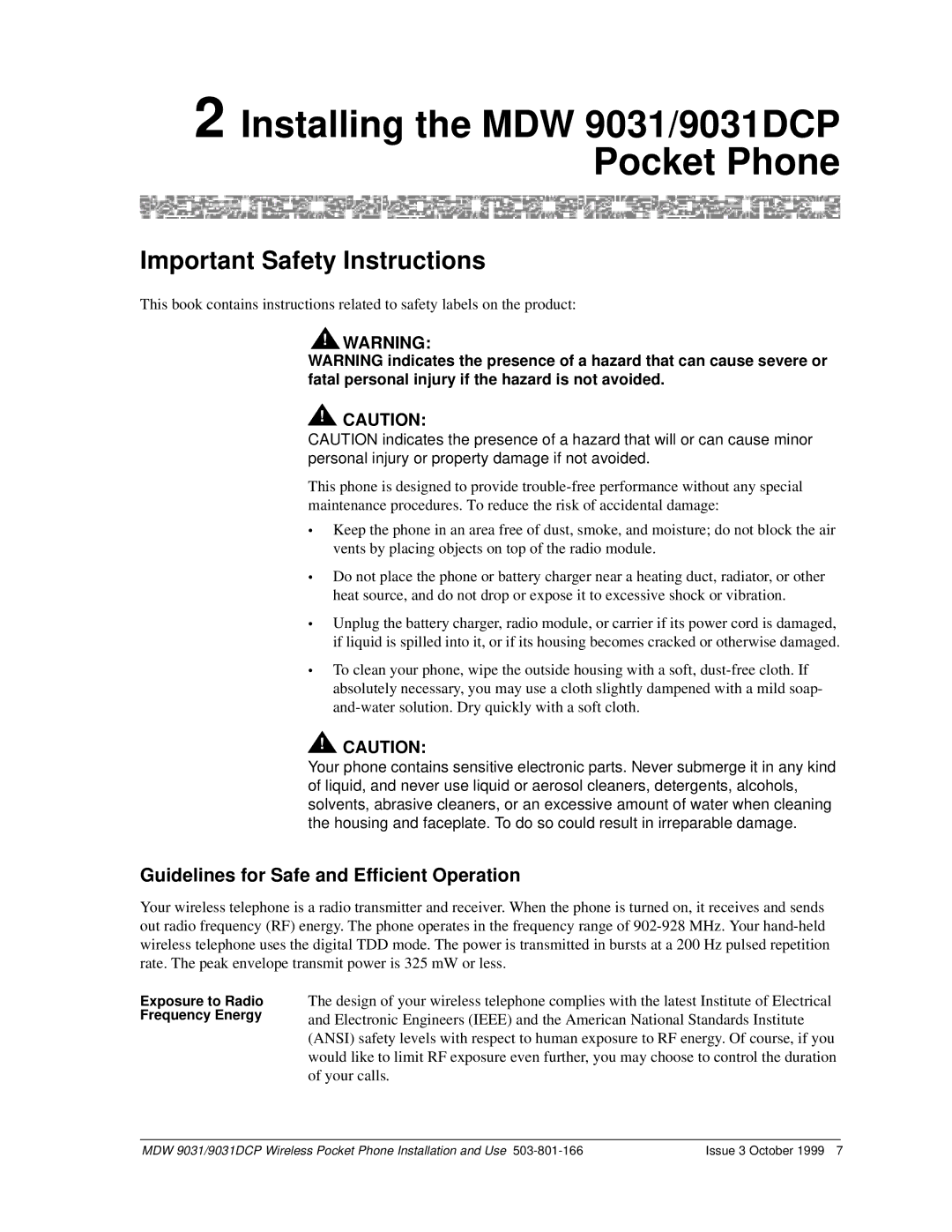
2 Installing the MDW 9031/9031DCP Pocket Phone
Important Safety Instructions
This book contains instructions related to safety labels on the product:
!![]() WARNING:
WARNING:
WARNING indicates the presence of a hazard that can cause severe or fatal personal injury if the hazard is not avoided.
!CAUTION:
CAUTION indicates the presence of a hazard that will or can cause minor personal injury or property damage if not avoided.
This phone is designed to provide
•Keep the phone in an area free of dust, smoke, and moisture; do not block the air vents by placing objects on top of the radio module.
•Do not place the phone or battery charger near a heating duct, radiator, or other heat source, and do not drop or expose it to excessive shock or vibration.
•Unplug the battery charger, radio module, or carrier if its power cord is damaged, if liquid is spilled into it, or if its housing becomes cracked or otherwise damaged.
•To clean your phone, wipe the outside housing with a soft,
!CAUTION:
Your phone contains sensitive electronic parts. Never submerge it in any kind of liquid, and never use liquid or aerosol cleaners, detergents, alcohols, solvents, abrasive cleaners, or an excessive amount of water when cleaning the housing and faceplate. To do so could result in irreparable damage.
Guidelines for Safe and Efficient Operation
Your wireless telephone is a radio transmitter and receiver. When the phone is turned on, it receives and sends out radio frequency (RF) energy. The phone operates in the frequency range of
Exposure to Radio Frequency Energy
The design of your wireless telephone complies with the latest Institute of Electrical and Electronic Engineers (IEEE) and the American National Standards Institute (ANSI) safety levels with respect to human exposure to RF energy. Of course, if you would like to limit RF exposure even further, you may choose to control the duration of your calls.
MDW 9031/9031DCP Wireless Pocket Phone Installation and Use | Issue 3 October 1999 7 |
